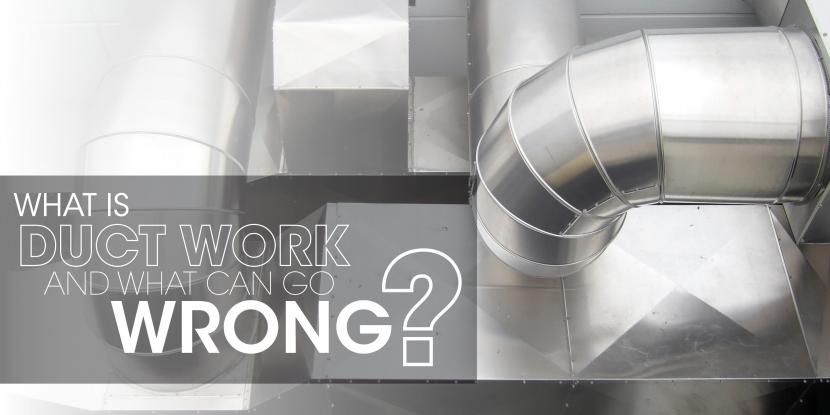What is Duct Work and What Can Go Wrong?

Clean your ductwork. Seal your ductwork. Insulate your ductwork. Why is there so much emphasis on this one particular component of your HVAC? It’s simple – if you want your ductwork to work, you’ve got to do a little ductwork.
Ductwork: An Introduction
In heating, ventilation, and air conditioning (HVAC), ductwork is used for the forced transportation of air. This airflow includes the supplied air from inside your home that is in need of heating or cooling, the return and dispersion of this conditioned air throughout your house, and the exhausting of air as necessary out of the home. Pipes used to transfer water, gas, or refrigerant are not ductwork. Ductwork moves air. There are many different ductwork shapes and constructions, including rectangular, round, and oval cross-sectional shapes, with materials ranging from metals to fiberglass and flexible plastics.
Scrimping on Duct Work: The End Results
They’re just ducts. How big of a problem could they cause? Depending on the issue, ductwork can result in an array of problems, including:
- Dirt and dust-covered surfaces.
- Poor air quality.
- An uncomfortable home.
- Higher heating and cooling bills.
What could be the cause of ductwork problems?
- Sloppy design and installation.
Improperly designed and installed systems, including inadequate ductwork, cannot heat or cool your home effectively or efficiently. Unfortunately, this issue is common. The National Comfort Institute reports the average duct system in the U.S. is only 57 percent efficient. - Leaky ducts.
In the average home, 20-40 percent of air moved through HVAC ductwork is completely lost, and with it, comfort and energy dollars. Properly sealing ductwork is essential for an effective and efficient HVAC system. - Loose registers and grills.
Another facet of leaking ductwork, registers, and grills is that they are not sealed properly. This can result in the further loss of conditioned air. - Flexible ducts that are twisted, kinked, crushed, or torn.
Commonly used flexible plastic ducts often suffer restrictions in airflow that can cause your HVAC system to fight in the effort to move air throughout your home. If you have this style of ductwork, be sure to check it regularly. - Pest-damaged ductwork.
Ductwork damaged or infested by animals or insects can result in an array of issues, from loss of conditioned air to poor air quality. - Uninsulated or improperly insulated ductwork.
What’s the temperature like in your attic or basement? Ducts that are not properly insulated can lose heated air in the winter and cooled air in the summer. - Dirty air ducts.
Is the air quality inside your home worse than the air outside? Dirty air ducts can distribute dust, pollen, dirt, germs, mold, mildew, and more throughout your home. To protect your indoor air quality, be certain to have ductwork inspected for possible contamination and cleaned when necessary.
Does ductwork have you bent out of shape? Aire Serv® can help. Contact Aire Serv today!
 Click to call
Click to call


